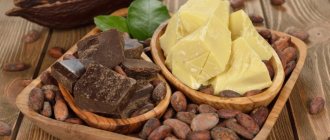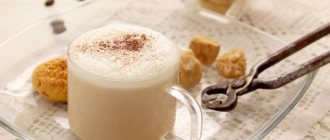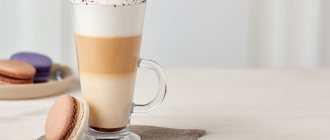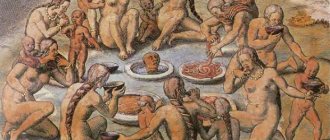What is cocoa butter?
Cocoa butter is a vegetable fat obtained from grated cocoa by pressing.
In turn, cocoa liquor is ground nibs from the fruits of the cocoa tree. Cocoa butter is the fatty base for the production of chocolate and other confectionery products. Cocoa butter is whitish-yellow in color, has virtually no odor, and is hard and brittle at room temperature. There are two types of cocoa butter: natural and deodorized (it undergoes additional processing).
As a rule, deodorized cocoa butter is used to produce chocolate. The deodorization process solves the problem of depersonalizing the taste and smell of oil. The essence of deodorization comes down to purifying oil using high temperature, vacuum and steam for distillation. After this treatment, saturated hydrocarbons, acids, aldehydes, pesticides, ketones and natural essential oils are removed from cocoa butter. In general, everything that can be removed is removed, so there is no need to even talk about the benefits of such oil. When producing chocolate using non-deodorized cocoa butter, chocolate acquires a special, specific aroma and taste, it retains most of the acids and essential oils, and it seems that one can conclude that such oil is healthy.
Let's look at the chemical composition of cocoa butter and compare it with other products.
The chemical composition of cocoa butter includes two- and three-acid triglycerides mixed with fatty acids:
- Oleic up to 43% (in hazelnut oil 70-80%);
- Stearic up to 34% (in lamb fat up to 30%);
- Lauric and palmitic up to 25% (in palm kernel oil 47-51%, butter 25%);
- Linoleic 2% (in sunflower oil 46-60%);
- Peanut, only traces present (found in peanut butter).
We can absolutely say that even with the presence of vital acids in cocoa butter, there is no deficiency in the daily human diet, because their consumption is compensated from other products of the daily diet.
Table
| element name | quantity | daily norm | |
| The nutritional value | |||
| Calorie content | 289 mg | ||
| Squirrels | 24.3 g | ||
| Carbohydrates | 10.2 g | ||
| Fats | 15 g | ||
| Vitamins | |||
| Vitamin B3 | 1.8 mg | 15.059 mg | |
| Vitamin B2 | 0.2 mg | 1.329 mg | |
| Vitamin PP (NE) | 6.8 mg | 15.059 mg | |
| Vitamin B1 | 0.1 mg | 1.159 mg | |
| Vitamin E (TE) | 0.3 mg | 10.882 mg | |
| Vitamin C | 0 | 69.118 mg | |
| Provitamin A | 0.02 mg | 5 mg | |
| Vitamin A (VE) | 3 mcg | 752.9 mcg | |
| Vitamin B5 | 1.5 mg | 3.794 mg | |
| Vitamin B6 | 0.3 mg | 1.512 mg | |
| Vitamin B9 | 0.045 mg | 0.286 mg | |
| Vitamin H | 0 | 0.034 mg | |
| Vitamin A | 0 | 0.753 mg | |
| Vitamin E | 0 | 15 mg | |
| Vitamin B12 | 0 | 3 mcg | |
| Vitamin B4 | 0 | 500 mg | |
| Vitamin D | 0 | 0.011 mg | |
| Vitamin K | 0 | 0.085 mg | |
| Macronutrients | |||
| Calcium | 128 mg | 987.5 mg | |
| Magnesium | 425 mg | 276.177 mg | |
| Sodium | 13 mg | 948.824 mg | |
| Potassium | 1.509 g | 1.807 g | |
| Phosphorus | 655 mg | 852.941 mg | |
| Sulfur | 80 mg | 1000 mg | |
| Silicon | 0 | 30 mg | |
| Microelements | |||
| Iron | 22 mg | 13.75 mg | |
| Chlorine | 28 mg | 2300 mg | |
| Copper | 4.55 mg | 0.806 mg | |
| Manganese | 4.625 mg | 2 mg | |
| Fluorine | 0.245 mg | 3 mg | |
| Bor | 0 | 1.4 mg | |
| Aluminum | 0 | 40 mg | |
| Titanium | 0 | 0.85 mg | |
| Strontium | 0 | 1.5 mg | |
| Iodine | 0 | 0.131 mg | |
| Zinc | 7.1 mg | 9.706 mg | |
| Chromium | 0 | 0.034 mg | |
| Molybdenum | 0.056 mg | 0.07 mg | |
| Vanadium | 0 | 0.01 mg | |
| Cobalt | 0 | 0.1 mg | |
| Nickel | 0 | 0.1 mg | |
| Rubidium | 0 | 0.2 mg | |
| Lithium | 0 | 0.2 mg | |
| Selenium | 0 | 0.04 mg | |
| Tin | 0 | 0.7 mg | |
| Zirconium | 0 | 0.5 mg | |
| Other elements | |||
| Alimentary fiber | 35.3 g | ||
| Organic acids | 3.9 g | ||
| Water | 5 g | ||
| Mono- and disaccharides | 2 g | ||
| Ash | 6.3 g | ||
| Alcohol | 0 | ||
| Starch | 8.2 g | ||
| Saturated fatty acids | 9 g | ||
| Cholesterol | 0 | ||
| Unsaturated fatty acids | 0 | ||
This table shows the average norms of elements for an adult.
How is cocoa powder obtained?
Cocoa powder is obtained by grinding the cocoa cake remaining after pressing cocoa butter from cocoa mass into a powder.
The production process for preparing cocoa powder consists of three technological operations:
- crushing and cooling of cake;
- grinding, rapid cooling and sifting (with air separation) of the mixture obtained during grinding to separate from it a very finely ground and homogeneous product called cocoa powder;
- packaging and packaging of cocoa powder.
To obtain good quality cocoa powder, certain temperature conditions must be observed. In rooms for the production of cocoa powder due to artificial cooling, the air temperature should be 8-12°C. When grinding in mills or in a disintegrator, the powder heats up due to friction. In this case, the cocoa butter particles melt, at elevated temperatures they harden slowly, and the color of the cocoa powder becomes dull gray. To obtain a good cocoa powder of a brownish-reddish hue, after grinding it is necessary to quickly cool its dust particles in an air stream at a temperature of 10-15 ° C, and then separate the resulting powder from the air.
Cocoa powder contains very few extractives (organic non-protein nitrogenous and non-nitrogenous compounds extracted by water from animal and plant tissues) and is practically insoluble in water. When mixed with water, it forms a suspension (a suspension of solid particles in water or milk). The quality of the suspension is assessed by its stability, it depends on the particle size of the cocoa powder in suspension.
Cocoa powder should have a color from light brown to dark brown without a dull gray tint, the taste and aroma characteristic of cocoa beans, without foreign tastes and odors. The powder should be finely ground, homogeneous, and when rubbed between your fingers, no grains should be felt.
To change the shades of cocoa, the alkalization process is used. Alkalization is the addition of an alkali (usually in the form of a solution of calcium carbonate, potassium or sodium carbonates) to the cocoa nibs. The alkali changes the color of the cocoa beans as they are roasted. The amount and concentration of alkali have a significant impact on the color of the resulting cocoa. The duration of alkalization depends on the time required for complete absorption of the alkaline solution into the cocoa nibs. This process usually takes about an hour, and during this time the temperature of the mixture can reach 80°C. The duration of absorption is influenced by the applied pressure or vacuum (separately or jointly). Alkalization affects not only the color, but also the aroma of cocoa products.
The influence of the amount and concentration of alkali on the color of the resulting cocoa
Contraindications for drinking cocoa
Unfortunately, cocoa is not beneficial in all cases. It is not recommended to drink it if you have gout or kidney disease (excess purine bases lead to the accumulation of uric acid, as well as the deposition of salts). You should not drink the drink if you are constipated, as the tannins present in cocoa will only worsen the situation.
People suffering from atherosclerosis and diabetes should be careful.
This drink should not be given to children under 3 years of age: the substances it contains may have an excessively stimulating effect on the child’s nervous system.
Useful properties of cocoa
The most useful of cocoa products is cocoa powder, and this is true, if only because the ratio of useful elements to the mass of the product in cocoa powder is the highest. By removing cocoa butter from cocoa liquor, we obtain cake with a high concentration of theobromine and flavonoids (food antioxidants).
Let's list the beneficial properties of cocoa:
- cocoa is a nutritious and high-calorie product. There are 400 kcal per 100 grams of cocoa beans. You are definitely guaranteed a charge of vivacity and energy for the whole day;
- is a natural antidepressant, because it contains phenylethylamine;
- contains vitamins (B9 - folic acid, A, B, PP, E), minerals (zinc, iron, potassium, calcium, sodium, phosphorus), protein;
- cold cocoa quickly restores muscles after sports or hard physical work and is even superior to special drinks intended for athletes;
- improves well-being;
- helps in the production of endorphin - the “hormone of joy”;
- contains melanin, a pigment that protects the skin from ultraviolet rays;
- helps lower blood pressure, which helps with hypertension;
- contains many procyanidins (good antioxidants);
- in some countries it is considered an aphrodisiac.
Cocoa still has many beneficial properties. Therefore, fans of this drink are lucky, because they can enjoy not only their favorite taste, but also receive benefits for their body. But remember: everything is good in moderation. Do not overuse this drink, because the cocoa beans from which it is made contain purines - substances that participate in the body's metabolic processes, but their excess in the blood can cause a number of complications and diseases. Approach everything wisely, and you will receive not only pleasure, but also health benefits.
Analyzing the above, we can say with confidence that all the beneficial properties of chocolate are concentrated in fibers and cocoa particles, and fat (cocoa butter) has nothing to do with it.
Components and calorie content of the drink
The powder is prepared by processing refined cocoa beans, whose calorie content is 607 kcal. Cocoa calorie content, dietary properties - on average 235-375 kcal per 100 g. The indicator varies depending on the amount of residual fat. In accordance with this, the product is divided into the following categories:
| Type of cocoa | % fat | Energy units | ||
| 100 g | 1 tbsp. | 1 tsp | ||
| Low fat | Up to 14 | 235 | 59 | 22 |
| Bold | 15-20 | 300 | 75 | 26 |
| Fatty | 20 | 374 | 94 | 37 |
The final calorie content is affected by additives that the manufacturer may include in the product. For example, Golden Label cocoa has a calorie content of 350, Nesquik has 379 kcal, and Kommunarka brand has 364 kcal.
There are many recipes for making cocoa. In addition to powder, water, milk, cream, spices, sugar, honey, bananas, and dried fruits are used. All components (except water) affect the final calorie content of the drink.
Cocoa with milk and sugar per 100 grams
Cocoa with milk.
The energy value of a drink brewed according to a traditional recipe can reach 250 kcal/100 g. This high figure is due to the presence of sugar, the calorie content of 1 tbsp. l. which is 20 kcal. Milk also increases calorie content depending on its fat content.
To prepare the drink you should take:
- milk – 1 l;
- cocoa – 3 tbsp;
- sugar – 3 tsp.
Heat milk in a saucepan. Mix sugar and powder separately, add 100 ml of hot milk and stir until the components dissolve. Add the mixture to the pan and bring to a boil. After 1 minute, remove the foam and pour into mugs.
3 servings of this drink account for almost half of the calorie content of the daily diet. The optimal amount is 1 cup (200 ml) in the morning and one in the afternoon as a snack.
Cocoa without sugar per 100 grams
The minimum calorie content of 100 g of a classic drink made with milk without sugar is 46 kcal. Much depends on the fat content of the chosen base. For example, if you take milk with a fat content of 1.5% and 20 g of cocoa, the final calorie content will remain 57 kcal/100 g.
To prepare, bring the milk to a boil and add the powder, stirring gently. Boil again and leave for 5 minutes. You can add a pinch of cinnamon, chopped half a banana or chopped date to the finished cocoa (this will add approximately 46 kcal).
Cocoa in water per 100 grams
Cocoa on water.
The energy value of such a drink depends on the amount and calorie content of cocoa powder, as well as the addition of sugar, spices, and dried fruits.
When cooking one portion according to the traditional recipe you will need:
- 1 tbsp. cocoa powder;
- 300 ml water;
- 1 tbsp. Sahara;
- chocolate – 20 g.
Boil water, add sugar and cocoa, mix well and heat. At the end, add the grated chocolate, stir until it melts and remove the drink from the heat.
The calorie content of 100 g of this drink is about 82 kcal. You can reduce it by removing sugar and chocolate. Then the calorie content will depend only on the type of powder.
Cocoa "Nesquik" per 100 grams
The product from Nestle includes sugar, iron orthophosphate, vitamin complex, salt, cinnamon, soy lecithin. Calorie content 100 g – 375 kcal. To prepare a portion, pour the powder (1-4 tsp) with a glass of water or milk:
- Water drink. One teaspoon of powder contains 27 kilocalories; water has no calorie content. It can be calculated that the calorie content of a drink prepared from 3 spoons of powder will be 81 kcal.
- With milk. The calorie content of milk with 1.5% fat content is 44 kcal, and with 3.2% fat content it is 59 kcal. A drink made from milk with a fat content of 3.2% and 3 tsp. Nesquik cocoa has an energy value of 140 kcal.
The more powder you add to the cup, the richer the taste the drink will have, but the higher its calorie content.
What is cocoa drink?
Cocoa is not only a tree or powder, there is also a drink with a similar name. The basis of this drink, of course, is cocoa powder, which is mixed with water or milk; it is also possible to add sugar or spices to the drink to give special shades of taste.
Very often, cocoa drink is confused with hot chocolate and vice versa. Unlike cocoa, hot chocolate has a chocolate base. Therefore, it is initially quite sweet and thick due to the cocoa butter and water emulsion. Cocoa has a tart and bitter taste due to its low fat content.
Calorie content of milk with cocoa
Speaking about the calorie content of cocoa with milk, it is worth emphasizing that this indicator may vary depending on the fat content of the milk and the concentration of cocoa powder added. We will look at data based on average indicators. Thus, the calorie content of milk with cocoa per 100 grams of drink is 85 kcal.
Much depends on the addition of sugar - it can be added in different quantities, you can use a sweetener, some even add honey. Obviously, the number of calories in cocoa with milk varies depending on the choice of additives.
Thus, adding sugar can significantly increase the calorie content of the product. How many calories are in cocoa with milk and sugar? If there are 20 grams of sugar, there are 85 calories as above. In the absence of sugar, the caloric value is reduced to 65 kcal per 100 g. 20 grams contain 3 teaspoons of sugar.










